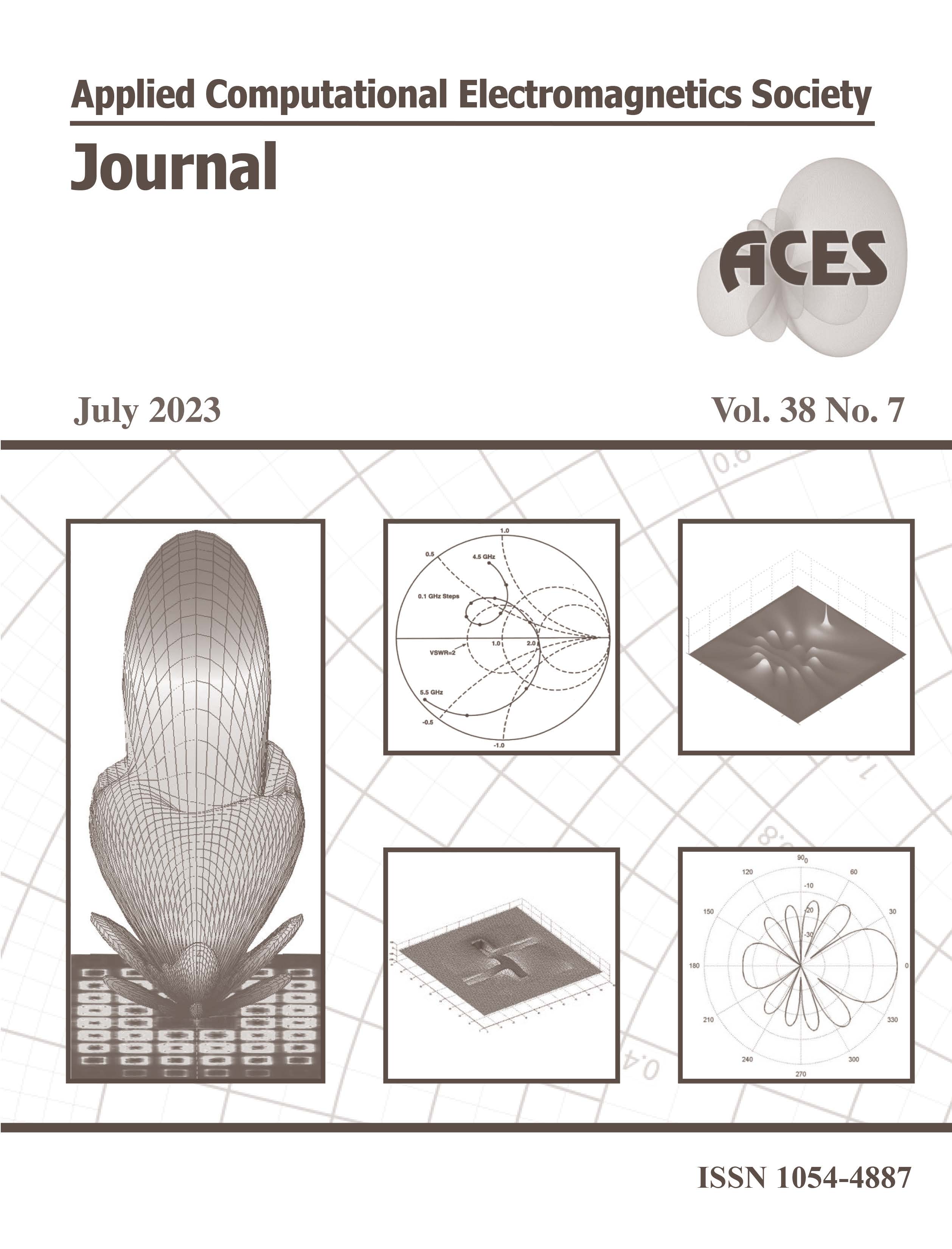Investigation and Analysis of Electromagnetic Interference for PWM Encoder of Urban Rail Train
DOI:
https://doi.org/10.13052/2023.ACES.J.380701Keywords:
Coupling path, Electromagnetic Interference (EMI), EMI suppression, Pulse width modulation (PWM) encoder, Urban rail trainAbstract
Electromagnetic compatibility (EMC) is an important factor in ensuring the safe operation of the sensitive electronic equipment on urban rail trains. The pulse width modulation (PWM) encoder of an urban rail train exported from China to Brazil is sometimes affected by electromagnetic interference (EMI), which causes the train to fail to run properly. To solve this problem, the EMC test is performed on the PWM encoder to identify the coupling path and the type of interference source. The EMI coupling model and the vehicle-catenary-rail model are established by using an electromagnetic transients program (EMTP) to analyze the mechanism of interference coupling. It is shown that the unbalanced voltage of the train body caused by the backflow of the grounding current is the root cause of the interference of the PWM encoder. The maximum voltage coupled to the internal port of the PWM encoder is about 1894 V, which is sufficient to burn out the encoder. A measure to suppress the interference by installing thyristor surge suppressors (TSS) P0300SC is proposed, which effectively solves the EMI problem of the PWM encoder.
Downloads
References
Y. Tang, F. Zhu, and Y. Chen. “Research on the influence of train speed change on the EMI of pantograph-catenary arc to main navigation stations,” Applied Computational Electromagnetics Society (ACES) Journal, vol. 36, no. 4, pp. 450-457, 2021.
Y. Tang, F. Zhu, H. Lu, and X. Li, “Analysis and suppression of EMI for traction control unit speed sensors of CRH380BL electric multiple unit,” Applied Computational Electromagnetics Society (ACES) Journal, vol. 66, no. 5, pp. 553-560, May 2018.
D. S. Jia and S. S. Wang, “Application of PWM encoder based on micro-controller for light rail vehicles,” Electric Locomotives & Mass Transit Vehicles, vol. 31, no. 1, pp. 23-26, Jan. 2008.
K. Huang, Z. Liu, F. Zhu, Z. Zheng, and Y. Cheng, “Evaluation scheme for EMI of train body voltage fluctuation on the BCU speed sensor measurement,” IEEE Transactions on Instrumentation and Measurement, vol. 66, no. 5, pp. 1046-1057, May 2017.
D. Franco, M. Aguado, C. Pinedo, I. Lopez, I. Adin, and J. Mendizabal, “A contribution to safe railway operation: evaluating the effect of electromagnetic disturbances on balise-to-BTM communication in railway control signaling systems,” IEEE Vehicular Technology Magazine, vol. 16, no. 2, pp. 104-112, June 2021.
Y. Wen, Q. Geng, J. Xiao, Y. Zhu, D. Zhang, and P. Spadoni, “Study on the electromagnetic susceptibility of balise transmission module system,” International Conference on Electromagnetics in Advanced Applications, Cartagena De Indias, Colombiano, pp. 667-670, 2018.
C. Song, R. Wang, and Y. Feng, “Potential EMI analysis of the LED display panel driving current,” Journal of Optoelectronics Laser, vol. 24, no. 6, pp. 1059-1064, June 2017.
S. Kim, S. An, N. Kim, H. Jeong, and H. Choi, “Circuit design for broad band EMI reduction in LCD driver IC,” 2014 NORCHIP, pp. 1-4, 2014.
J. Guardado, S. Maximov, E. Melgoza, J. Naredo, and P. Moreno, “An improved arc model before current zero based on the combined Mayr and Cassie arc models,” IEEE Trans. Power Delivery, vol. 20, no. 1, pp. 138-142, Jan. 2005.
M. Cassie, “Theorie nouvelle des arcs de rupture et de la rigidite des circuits,” Cigre, pp. 588-608, 1939.
O. Mayr, “Beitrage zur theorie des statischen und des dynamischen lichtbogens,” Archiv fur Elektrotechnik, vol. 37, no. 12, pp. 588-608, 1943.
X. Wei, G. Guo, P. Chen, and G. Wu, “Influence of protective grounding on high-speed EMU grounding reflux,” Journal of the China Railway Society, vol. 39, no. 8, pp. 39-44, Aug. 2017.
L. Xie, T. Wang, N. Sun, X. Hou, Z. Chen, C. Ju, and X Zhou, “Study on the mechanism and suppression method of transient overvoltage in high-speed trains,” 2020 5th Asia Conference on Power and Electrical Engineering (ACPEE), pp. 727-731, 2017.
X. Song, Z. Liu, and Y. Wang, “Study on electromagnetic transient process in split-phase insulator considering viaduct’s electrical coupling based on ATP-EMTP,” Power System Protection and Control, vol. 44, no. 13, pp. 6-13, July 2016.
IEC 62236 Railway Applications-Electromagnetic Compatibility, 2018.
C. Feng and X. Ma, An Introduction to Engineering Electromagnetic Fields, Higher Education, Beijing, 2004.
F. Zhu, X. Li, P. Li, J. Li, and X. Xing, “Accurate calculation formula for rail inductance of electrified railway,” China Railway Science, vol. 38, no. 3, pp. 83-88, May 2017.
Y. Wang and Y. Tsai, “Calculation of the frequency-dependent impedance of rail tracks using a four-parameter equivalent tubular conductor model,” IEEE Trans. Power Delivery, vol. 19, no. 3, pp. 1142-1147, 2004.
F. Tesche, M. Ianoz, and T. Karlsson, EMC Analysis Methods and Computational Models, John Wiley & Sons, New York, 1997.
R. Paul, Analysis of Multiconductor Transmission Lines, John Wiley & Sons, New York, 2008.




